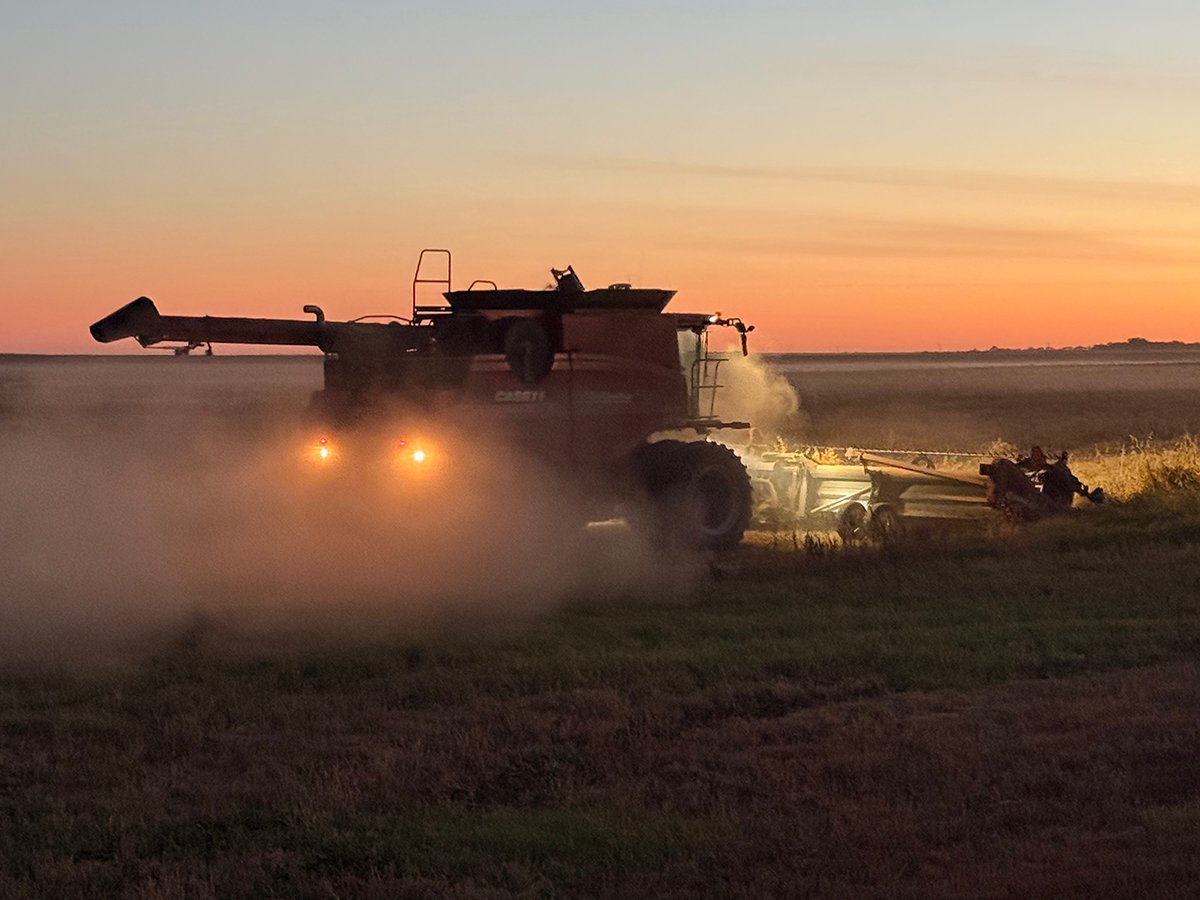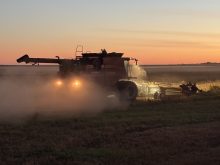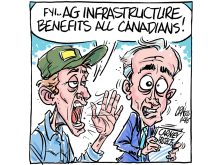It sometimes comes up in a question and answer session, and it’s often talked about over lunch and at coffee breaks. But it isn’t usually dealt with directly at farm meetings. It’s the elephant in the room within most farm policy analysis.
It’s the topic of really big farm operations.
Every area now has grain farms that have grown to a massive scale. While 10,000 acres used to raise eyebrows, now it’s the operations that are 20,000 or 50,000 acres. Some are even larger.
Read Also

Downturn in grain farm economics threatens to be long term
We might look back at this fall as the turning point in grain farm economics — the point where making money became really difficult.
On one hand there’s admiration. On the other, there’s fear and no doubt envy.
Rather than one seeding outfit and one or two combines, a lot of farmland has been gobbled up by operations that run a fleet of seeders and combines.
In many cases, people are renting their farms to these large operators and then gaining seasonal employment to run equipment in the peak seasons.
Generally speaking, these mega-farms are well managed. They didn’t grow big by having inferior production and marketing practices.
Farms have become larger throughout history, but this represents a structural change. The largest farms are showing exponential growth rather than just incremental expansion.
Some observers have long expressed the niggling fear that big corporations would take over all the farmland. Instead, the takeover in grain farming is coming from within. Cargill isn’t running massive farms on the Canadian Prairies.
Family owned farm corporations have become the titans.
With strong profitability in the grain sector, the trend will no doubt continue. Watch for new records to be set for land prices and for cash rents as we head into the next growing season.
In many cases, it will be the mega farms leading the charge followed closely by all the wannabes.
That’s great if you’re selling or renting land. It isn’t great if you’re a farmer trying to expand. Despite the concerns, no one seems to be advocating any sort of limit on farm size. It’s not clear how that would be accomplished, even if it became a policy objective.
Are mega farms bad? They may be perceived that way if you’re a moderate-sized operation trying to compete for land.
Big operations may have more seasonal labour problems and extra travel between blocks of land, but they also have economies of size that provide advantages.
Input suppliers and grain buyers pay attention to their big accounts, and why wouldn’t they?
In many cases, the mega farms probably get better service and better prices.
However, moderate-sized operations can also be profitable. Maybe the equipment is older and they don’t have bragging rights for how many acres they can seed or harvest in a day, but they can still take pride in what they do. There has been a good living to be made in recent years.
It’s important to realize that not everyone wants to run a mega farm. What matters more: your health and family or having the biggest farm in the neighbourhood? Many of the mega farm operators seem driven to see how big they can make the empire. Good for them, but the personal cost can be high.
There will long be small and medium-sized grain farms. There will long be people who work off the farm to help make ends meet. But there’s little doubt that grain farming will be increasingly defined by the really big operators.
It’s time to openly discuss this structural change because it’s certainly a topic on the minds of many people.
Kevin Hursh is an agricultural journalist, consultant and farmer. He can be reached by e-mail at kevin@hursh.ca.

















